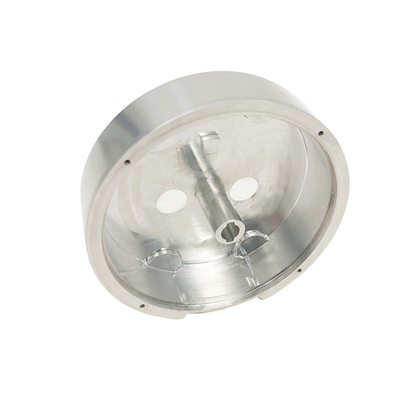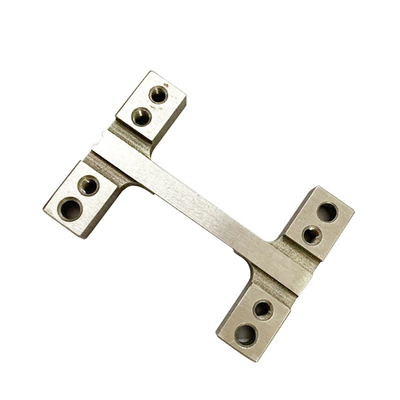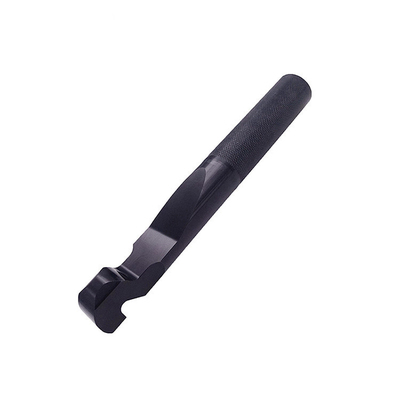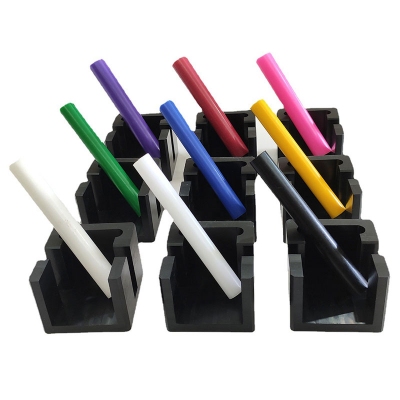How to choose the right stainless steel welding consumables?
1.Four types of stainless steel and the role of alloying elements
This is based on the metallographic structure of stainless steel at room temperature. When low carbon steel is heated to 1550°F, its structure changes from the ferrite phase at room temperature to the austenite phase. When cooled, the low-carbon steel structure is transformed into ferrite again. The austenite structure existing at high temperature is non-magnetic, and its strength is smaller and tougher than the room temperature ferrite structure.
When the Cr content in the steel is greater than 16%, the ferrite structure at room temperature is fixed so that the steel maintains the ferrite state in all temperature ranges. Therefore, it is called ferritic stainless steel. When the Cr content is greater than 17% and the Ni content is greater than 7%, the austenite phase is fixed, so that the austenite state is maintained from low temperature to almost melting point.
Austenitic stainless steels are usually called "Cr-Ni" type, and martensitic and ferritic stainless steels are directly called "Cr" type. Elements in stainless steel and filler metals can be divided into austenite-forming elements and ferrite-forming elements. The most important austenite forming elements are Ni, C, Mn and N, and the ferrite forming elements are Cr, Si, Mo and Nb. Adjusting the element content can control the ferrite content in the weld.
Austenitic stainless steels are easier to weld and have better welding quality than stainless steels with a Ni content of less than 5%. The welded joints of austenitic stainless steel have good strength and toughness, and generally do not require pre-weld preheating and post-weld heat treatment. In the field of stainless steel welding, austenitic stainless steel accounts for 80% of all stainless steel consumption, so the focus of this article is the welding of austenitic stainless steel.
2. How to choose the right stainless steel welding consumables?
If the base metal is the same, the first criterion is "match with the base metal". For example, when welding 310 or 316 stainless steel, choose the corresponding welding consumables.
For welding dissimilar materials, follow the criteria for selecting base materials with high alloying element content. For example, when welding 304 and 316 stainless steel, choose 316 type welding consumables.
However, there are many special cases that do not follow the principle of "matching base metal". At this time, it is necessary to "check the welding material selection table". For example, type 304 stainless steel is the most common base material, but there is no type 304 electrode.
If the welding material is to be matched with the base metal, how to choose the welding material to weld 304 stainless steel?
When welding 304 stainless steel, use 308 type welding consumables, because the extra elements in 308 stainless steel can better stabilize the weld area.
308L is also an acceptable choice. L means low carbon content, 3XXL stainless steel means carbon content ≤ 0.03%, and standard 3XX stainless steel can contain up to 0.08% carbon content.
Manufacturers who use the GMAW method for welding also consider using 3XXSi type welding consumables, because Si can improve wettability (Figure 2). In the case that the weldment has a high bulge or the weld pool is poorly connected at the weld toe of the fillet weld or lap weld, the use of Si-containing gas shielded welding wire can wet the weld and increase the deposition rate.
3.How to weld stainless steel and carbon steel?
In order to reduce costs, some structural parts will be welded with a corrosion-resistant layer on the surface of carbon steel. When welding a base metal containing no alloying elements and a base metal containing alloying elements, use a welding material with a higher alloy content to balance the dilution rate in the weld.
It should be pointed out that the thermal expansion rate of austenitic stainless steel is 50% higher than that of carbon steel. When welding, the difference in thermal expansion rate will produce internal stress, which will lead to cracks. At this time, it is necessary to select the appropriate welding consumables or specify the appropriate welding process (Figure 3).
4. What is a suitable pre-weld cleaning operation?
When welding with other materials, first use a solvent that does not contain chloride ions to remove oil, marks and dust. In addition, the first thing to pay attention to when welding stainless steel is to avoid being polluted by carbon steel and affecting corrosion resistance. Some companies use separate storage of stainless steel and carbon steel to avoid cross-contamination. When cleaning the area around the groove, use special abrasive wheels and brushes for stainless steel. Sometimes it is necessary to clean the joints a second time. Since the electrode compensation operation of stainless steel welding is more difficult than that of carbon steel, the cleaning of the joints is very important.
5. What is the correct cleaning operation after welding? Why does stainless steel weldment rust?
First of all, let us recall that the reason why stainless steel does not rust is: the reaction of Cr and O forms a dense oxide layer on the surface of the material, which plays a protective role. Stainless steel rusts because of the precipitation of carbides (see the last question) and the heating during the welding process caused iron oxides to be formed on the surface of the weldment. In the welding state, a perfect weldment may also produce undercuts in the rusty area at the boundary of the welding heat-affected zone within 24 hours.
Therefore, in order to regenerate new chromium oxide, stainless steel needs to be polished, pickled, polished or scrubbed after welding. It should be emphasized that the sander and brush must be dedicated.
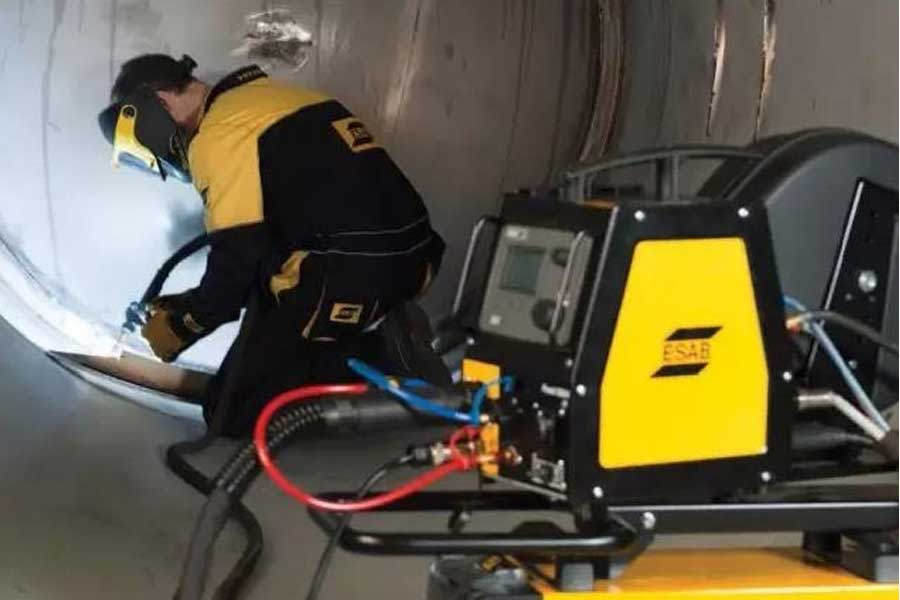
6.Why is stainless steel welding wire magnetic?
The all-austenitic stainless steel is non-magnetic. However, the higher temperature during welding causes the grains in the structure to grow, and the sensitivity to cracks after welding increases. In order to reduce the susceptibility to thermal cracking, welding consumables manufacturers add ferrite-forming elements to the welding consumables (Figure 4). The ferrite phase makes the austenite grains finer, thereby increasing the crack resistance.
The magnet will not attract the austenitic weld metal, but a slight attraction can be felt when holding the magnet. However, this has also caused some users to mistakenly believe that the product has the wrong label or used the wrong solder (especially when the label on the package is torn off).
The amount of ferrite in the welding consumables depends on the service temperature of the application. For example, too much ferrite reduces the toughness at low temperatures. Therefore, the ferrite number of 308 type welding consumables used for LNG pipeline is between 3-6, while the ferrite number of standard 308 type welding consumables is 8. In short, welding consumables may look very similar, but very small differences in composition can sometimes cause big differences.
7.How to weld duplex stainless steel more easily?
Generally, the austenite phase and ferrite phase in the structure of duplex stainless steel each account for about 50%. The presence of the ferrite phase can improve the strength and stress corrosion resistance, while the austenite phase can improve the toughness. The combined effect of the two phases makes the performance of duplex stainless steel more excellent (Figure 5). The range of duplex stainless steel is very wide, the most common model is 2205: containing 22% Cr, 5% Ni, 3% Mo and 0.15% N.
When welding duplex stainless steel, the presence of too much ferrite may cause some problems (the heat of the arc causes the atoms in the ferrite matrix to reorder). For this reason, the welding material needs to provide more austenite forming elements, usually 2-4% higher than the base metal Ni. For example, the flux-cored wire used for welding 2205 stainless steel contains 8.85% Ni.
After welding, the ferrite content in the weld is between 25-55% (maybe higher). Note: The cooling rate after welding should be slow enough to allow the austenite to re-form, but not too slow, too slow will precipitate intermetallic phase, and not too fast, too fast will produce too much ferrite in the heat-affected zone. Be sure to follow the welding process and welding material selection manual provided by the manufacturer.
8. Why do you need to adjust the parameters at any time when welding stainless steel?
When welding stainless steel, the main reason for welders to adjust welding parameters (voltage, current, arc length, inductance, pulse width, etc.) at any time is the mismatched welding material composition. Chemical composition is very important, and differences in composition between batches can cause very different welding behaviors, such as poor wettability and slag removal. Welding material diameter, surface cleanliness, pouring performance, and spiral shape can all affect the welding behavior of GMAW and FCAW.
9. How to control the precipitation of carbides in austenitic stainless steel?
At 800-1600°F, when the carbon content exceeds 0.02%, C will diffuse and migrate to the austenite grain boundaries and react with Cr at the grain boundaries to form chromium carbides. If Cr is largely fixed by the C element, the corrosion resistance will decrease. At this time, if exposed to a corrosive environment, intergranular corrosion will occur, causing the grain boundaries to be eroded away.
In order to control the precipitation of carbides, welding consumables with low carbon content are used to ensure that the carbon content in the weld metal is as low as possible (up to 0.04%). C can also be fixed by adding Nb and Ti elements. Compared with Cr, the affinity of Nb and Ti with C is greater. Type 347 welding consumables are designed for this purpose.
10. How to prepare for the selection of welding consumables?
First of all, we must collect information on the terminal application of the weldment, including the service environment (especially the service temperature, whether there is corrosive medium and the expected corrosion resistance) and the expected service life. Information on the mechanical properties required under service conditions is also important, such as strength, toughness, plasticity and fatigue properties.
Most of the leading welding consumable manufacturers will provide guidance manuals for the selection of welding consumables. Here, the author once again emphasizes: it is recommended to refer to the welding consumables application manual or contact their technical experts. They will help us choose stainless steel welding consumables more correctly.
Link to this article: How to choose the right stainless steel welding consumables?
Reprint Statement: If there are no special instructions, all articles on this site are original. Please indicate the source for reprinting:https://www.cncmachiningptj.com/,thanks!
 PTJ® provides a full range of Custom Precision cnc machining china services.ISO 9001:2015 &AS-9100 certified. 3, 4 and 5-axis rapid precision CNC machining services including milling, sheet metal to customer specifications,Capable of metal & plastic machined parts with +/-0.005 mm tolerance.Secondary services include CNC and conventional grinding, laser cutting,drilling,die casting,sheet metal and stamping.Providing prototypes, full production runs, technical support and full inspection.Serves the automotive, aerospace, mold&fixture,led lighting,medical,bicycle, and consumer electronics industries. On-time delivery.Tell us a little about your project’s budget and expected delivery time. We will strategize with you to provide the most cost-effective services to help you reach your target,Welcome to Contact us ( [email protected] ) directly for your new project.
PTJ® provides a full range of Custom Precision cnc machining china services.ISO 9001:2015 &AS-9100 certified. 3, 4 and 5-axis rapid precision CNC machining services including milling, sheet metal to customer specifications,Capable of metal & plastic machined parts with +/-0.005 mm tolerance.Secondary services include CNC and conventional grinding, laser cutting,drilling,die casting,sheet metal and stamping.Providing prototypes, full production runs, technical support and full inspection.Serves the automotive, aerospace, mold&fixture,led lighting,medical,bicycle, and consumer electronics industries. On-time delivery.Tell us a little about your project’s budget and expected delivery time. We will strategize with you to provide the most cost-effective services to help you reach your target,Welcome to Contact us ( [email protected] ) directly for your new project.

- 5 Axis Machining
- Cnc Milling
- Cnc Turning
- Machining Industries
- Machining Process
- Surface Treatment
- Metal Machining
- Plastic Machining
- Powder Metallurgy Mold
- Die Casting
- Parts Gallery
- Auto Metal Parts
- Machinery Parts
- LED Heatsink
- Building Parts
- Mobile Parts
- Medical Parts
- Electronic Parts
- Tailored Machining
- Bicycle Parts
- Aluminum Machining
- Titanium Machining
- Stainless Steel Machining
- Copper Machining
- Brass Machining
- Super Alloy Machining
- Peek Machining
- UHMW Machining
- Unilate Machining
- PA6 Machining
- PPS Machining
- Teflon Machining
- Inconel Machining
- Tool Steel Machining
- More Material

